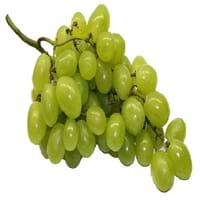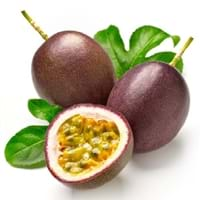Health Benefits
Cancer prevention, Kidney stone treatment, Prevents constipation, Treatment of alzheimer's disease
Asthma treatment, Heart care, Regulates Blood Sugar, Muscle pain relief, Reduces nervous tension
General Benefits
Digestive aid, Improves eye vision, Maintains healthy cholesterol level, Treatment of migraine
Boosts immune system, Controls blood pressure, Digestive aid, Fights against infections, Helps in weight loss
Skin Benefits
Anti-aging benefits, Heals sunburn, Skin rejuvenation, Treatment of dark spots
Anti-aging benefits, Skin revitalization
Hair Benefits
Prevents hair loss, Regulates hair growth, Treatment of dandruff
Protects hair
Allergy Symptoms
Anaphylaxis, Asthma, Breathing difficulty, Coughing, Drop in blood pressure, Hives, Skin rash, Stuffy nose, Swelling of mouth, tongue or lips, Wheezing
Anaphylaxis, Breathing difficulty, Decrease in blood pressure, Dizziness, Skin rash, Swelling of face, Swelling of mouth, tongue or lips
Side Effects
Allergic reaction, Skin rash, Might slow down the process of blood clotting
Stressed heart, Nausea, Vomiting, Possibly unsafe during pregnancy
Best Time to Eat
As a snack in the late afternoon, Don't consume at night and before bed, Eat the fresh ones, avoid mixing with any other foods, don't eat after meal., Morning time (before lunch)
As a snack in the late afternoon, Don't consume at night and before bed, Morning time (before lunch), Strictly avoid empty stomach
Vitamin B5 (Pantothenic Acid)
Not Available
Vitamin C (Ascorbic Acid)
Vitamin K (Phyllochinone)
Phytosterol
Not Available
Calories in Fresh Fruit with Peel
Not Available
Calories in Fresh Fruit without Peel
Not Available
Calories in Frozen Form
Not Available
Season
Autumn, Summer
All seasons
Varieties
Cabernet Sauvignon, Merlot, Pinot Noir, Syrah/Shiraz and Zinfandel
Australian Purple, Common Purple, Kapoho Selection, Pratt Hybrid, University Selection No. B-74, Waimanalo Selection and Yee Selection
Color
Green, Red
Purple, Yellow
Inside Color
Light Green
Yellow
Taste
Sweet-Sour
Sweet, Tart
Origin
Western Asia, Central Europe
Argentina, Brazil, Paraguay
Grows on
Vines
Not Available
Soil Type
Clay loam, Sandy loam
Sandy loam
Climatic Conditions
Warm
Frost free, Sunny, Warm
Facts about
- If left alone, a grapevine can spread 50 feet and even more.
- There are more than 8,000 varieties of grape worldwide.
- They are available in 7 different colors: red, green, white, black, purple, blue and golden.
- Passion fruit tree can grow up to 20 feet in a year.
- More than 200 species of passion fruit are found near Amazon river.
- Oil extracted from its seeds is used in various cosmetics.
Top Producer
Spain
Brazil
Other Countries
Argentina, Armenia, Australia, Chile, France, Iran, Italy, Portugal, Romania, Turkey, United States of America
Colombia, Ecuador, Indonesia, Kenya, Peru
Top Importer
United States of America
Brazil
Top Exporter
Chile
Ecuador
Botanical Name
Vitis vinifera
Passiflora edulis
Synonym
Not Available
Passiflora edulis f. edulis or Passiflora edulis f. flavicarpa
Subkingdom
Tracheobionta
Tracheobionta
Division
Magnoliophyta
Magnoliophyta
Class
Magnoliopsida
Magnoliopsida
Subclass
Rosidae
Dillenhidae
Order
Vitales
Malpighiales
Family
Vitaceae
Passifloraceae
Species
Vitis vinifera
P. edulis
Generic Group
Grape
Passion Flower
Difference Between Grape and Passionfruit
We might think that Grape and Passionfruit are similar with respect to nutritional value and health benefits. But the nutrient content of both fruits is different. Grape and Passionfruit Facts such as their taste, shape, color, and size are also distinct. The difference between Grape and Passionfruit is explained here.
The amount of calories in 100 gm of fresh Grape and Passionfruit with peel is 69.00 kcal and Not Available and the amount of calories without peel is Not Available and 97.00 kcal respectively. Thus, Grape and Passionfruit belong to Low Calorie Fruits and High Calorie Fruits category.These fruits might or might not differ with respect to their scientific classification. The order of Grape and Passionfruit is Vitales and Malpighiales respectively. Grape belongs to Vitaceae family and Passionfruit belongs to Passifloraceae family. Grape belongs to Vitis genus of Vitis vinifera species and Passionfruit belongs to Passiflora genus of P. edulis species. Beings plants, both fruits belong to Plantae Kingdom.









